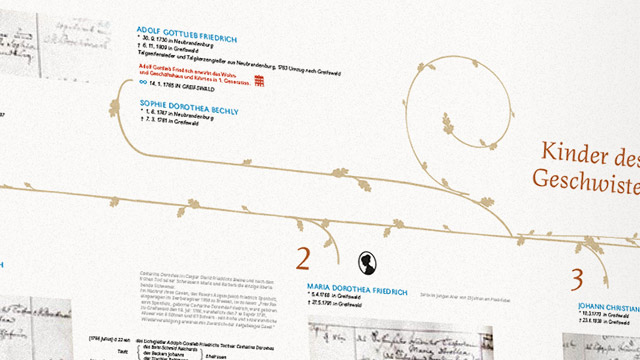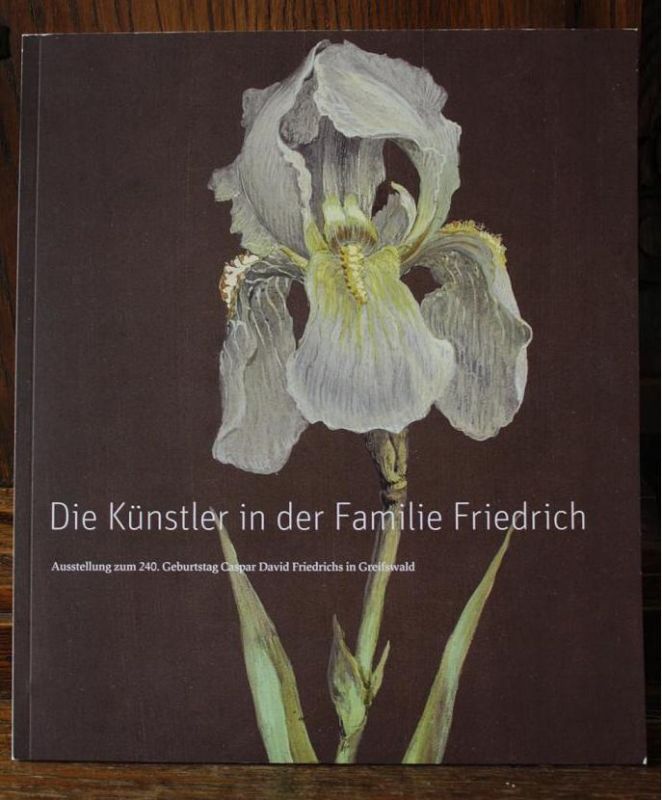
Family
Friedrich’s family originally hails from Neubrandenburg. Caspar David’s father, Adolf Gottlieb Friedrich, is born in Neubrandenburg in 1730, to a son of a tailor. He becomes a soap boiler and tallow candle-maker. At the age of 33, he moves to Greifswald as there are no qualified soap boilers or candle-makers based there yet. In January 1765, he and Sophie Dorothea Bechly from Neubrandenburg marry at St. Nicholas’ Cathedral in Greifswald and buy a house in Lange Straße 57, today the location of the Caspar David Friedrich Centre. Friedrich senior first operates a candle-maker’s workshop in the house and later adds a soap boiler’s workshop, which can still be visited in a rear building of the Centre today.
The Friedrichs have ten children in total – three girls and seven boys - of whom Caspar David is born the sixth. However, of his six brothers, only four survive to adulthood. His eldest brother, Johann David (born in 1772) dies, only weeks after his birth. His younger brother Johann Christoffer (born 1775) drowns in 1787, when trying to save Caspar David who had fallen through the ice when skating on the frozen Greifswald moat.
All Friedrich brothers learn classical trades. They become soap boiler and candle-maker, blacksmith or carpenter. Three of his brothers stay in Greifswald, one returns to Neubrandenburg. Of his three sisters, only the eldest, Catharina, reaches old age. She marries August Jakob Friedrich Sponholz, a pastor from Breesen. Maria Dorothea Friedrich (born 1768) dies of typhus in 1791 aged 23, while his younger sister, Barbara Elisabeth Johanna (born 1780), dies of chickenpox as a toddler.
In 1794, Caspar David Friedrich leaves his family and Greifswald to study at the Copenhagen Academy of Fine Arts. From there, he moves to Dresden in 1798. He maintains a very close relationship with his siblings throughout his life, to which the so-called ‘sibling letters’ bear impressive testimony. Caspar David Friedrich regularly visits his siblings and always finds time for a stopover in Greifswald when traveling from Dresden to Rügen.
The year 1818 is a special one – Caspar David Friedrich marries Christine Caroline Bommer, a young bourgeois woman from Dresden, and introduces her to his family in Greifswald. During his stay, he paints a watercolour of the ‘Greifswald Market Square’ with which he not only pays tribute to his native city but also to his siblings in Greifswald. The painting, which amongst all his works is unique in style, is today in possession of the Pomeranian State Museum.
Friedrich’s ancestors can be traced to this day.
In celebration of Caspar David Friedrich’s 240th birthday on 5 September 2014, the Caspar David Friedrich Centre expanded their permanent exhibition by the ‘family chamber’ (Familienkabinett). Here, the visitors can explore the relationships between the famous artist and his siblings by a large family tree as well as audio-visual material. The chamber is furnished in the style of the times. The very private character of this room invites the visitor to linger and explore.
The catalogue which was published on the occasion of the special exhibition ‘The Artists within the Friedrich Family’, is still available at the museum shop of the CDF Centre.
Source: Dagmar Lißke and Susanne Papenfuß

